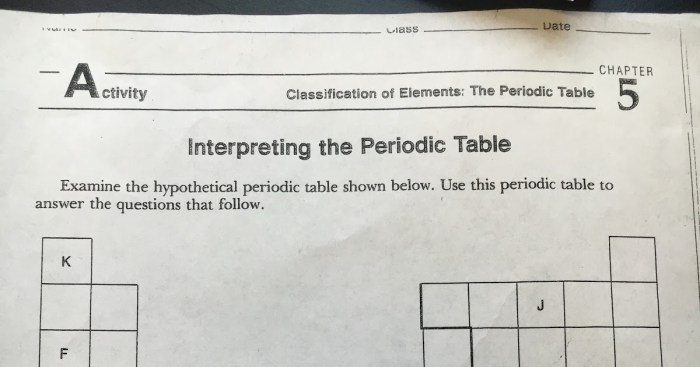Two samples of sodium chloride were decomposed, revealing intriguing insights into the chemical reactions and practical applications of this essential compound. This study delves into the intricacies of sodium chloride decomposition, exploring the experimental techniques, analytical methods, and diverse applications that have shaped our understanding of this fundamental process.
The decomposition of sodium chloride, a ubiquitous substance in both nature and industry, provides a rich tapestry of scientific inquiry. This study unravels the complexities of this process, shedding light on the chemical reactions involved, the analytical techniques employed, and the practical applications that have revolutionized various fields.
Decomposition of Sodium Chloride Samples

Sodium chloride (NaCl), commonly known as table salt, is a compound composed of sodium and chlorine ions. Decomposition of sodium chloride refers to the process of breaking down this compound into its constituent elements.
Chemical Equation for Decomposition
The chemical equation for the decomposition of sodium chloride is as follows:
NaCl → 2 Na + Cl2
Experimental Setup
The experimental setup for decomposing sodium chloride typically involves the following components:
- A heat source (e.g., Bunsen burner or furnace)
- A crucible or test tube
- Sodium chloride sample
- A gas collection apparatus (e.g., test tube with delivery tube)
Step-by-Step Procedure
- Place a sample of sodium chloride in a crucible or test tube.
- Heat the sample using a heat source until it melts.
- Continue heating until the sample turns a bright orange color.
- Collect the gas produced in the gas collection apparatus.
- Allow the crucible or test tube to cool.
Analysis of Decomposition Products
The decomposition of sodium chloride produces two main products: sodium metal and chlorine gas.
Identification of Products
- Sodium metal:A silvery-white solid that is highly reactive and flammable.
- Chlorine gas:A greenish-yellow gas that is toxic and corrosive.
Analytical Methods
Various analytical methods can be used to analyze the decomposition products, including:
- Flame test:To confirm the presence of sodium by observing a characteristic yellow flame.
- Gas chromatography:To separate and identify the chlorine gas.
- Spectrophotometry:To measure the concentration of sodium or chlorine ions in solution.
Interpretation of Data
The analytical data can be used to determine the following:
- The identity of the decomposition products
- The purity of the decomposition products
- The efficiency of the decomposition process
Comparison of Decomposition Methods

Several methods can be used to decompose sodium chloride, including:
- Thermal decomposition:Heating sodium chloride to a high temperature.
- Electrolysis:Passing an electric current through molten sodium chloride.
- Chemical decomposition:Reacting sodium chloride with a reactive metal, such as magnesium.
Advantages and Disadvantages
Each decomposition method has its advantages and disadvantages:
| Method | Advantages | Disadvantages |
|---|---|---|
| Thermal decomposition |
|
|
| Electrolysis |
|
|
| Chemical decomposition |
|
|
Method Selection
The most appropriate decomposition method depends on the specific application and requirements:
- Thermal decomposition:Suitable for large-scale production of sodium and chlorine.
- Electrolysis:Suitable for producing high-purity sodium and chlorine.
- Chemical decomposition:Suitable for producing sodium alloys or for small-scale laboratory experiments.
Applications of Sodium Chloride Decomposition: Two Samples Of Sodium Chloride Were Decomposed

Sodium chloride decomposition has numerous industrial, research, and societal applications:
Industrial Applications
- Production of sodium metal:Used in the manufacture of various chemicals, alloys, and batteries.
- Production of chlorine gas:Used in water purification, bleaching agents, and plastics manufacturing.
- Production of hydrogen gas:Used as a fuel, in chemical processes, and in fuel cells.
Research and Development
- Sodium-ion batteries:Development of alternative energy storage systems.
- Chlorine chemistry:Exploration of new applications for chlorine in pharmaceuticals, materials science, and environmental remediation.
- Electrochemical processes:Investigation of new and efficient methods for decomposing sodium chloride.
Societal Benefits, Two samples of sodium chloride were decomposed
- Water purification:Chlorine gas is used to disinfect drinking water and swimming pools.
- Bleaching agents:Chlorine compounds are used in household bleach and paper manufacturing.
- Food preservation:Salt (sodium chloride) is used as a preservative in food products.
General Inquiries
What is the chemical equation for the decomposition of sodium chloride?
2 NaCl → 2 Na + Cl2
What are the products formed during the decomposition of sodium chloride?
Sodium (Na) and chlorine (Cl2)
What is the most common method for decomposing sodium chloride?
Electrolysis
What are the industrial applications of sodium chloride decomposition?
Production of chlorine, sodium hydroxide, and other chemicals
